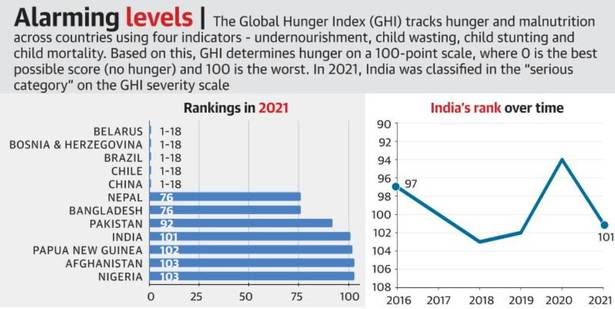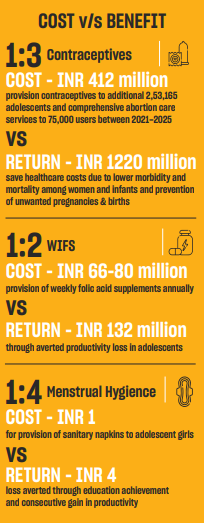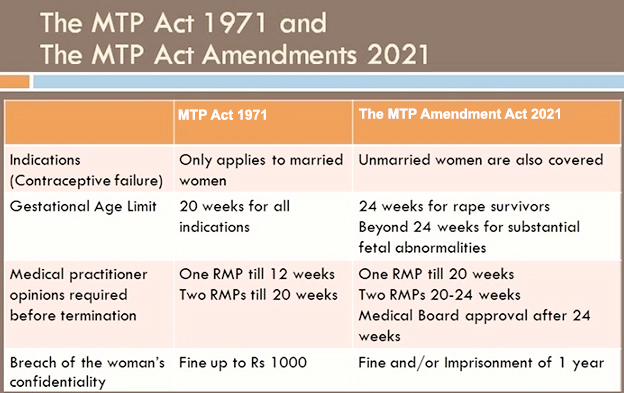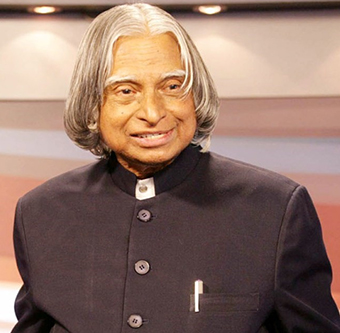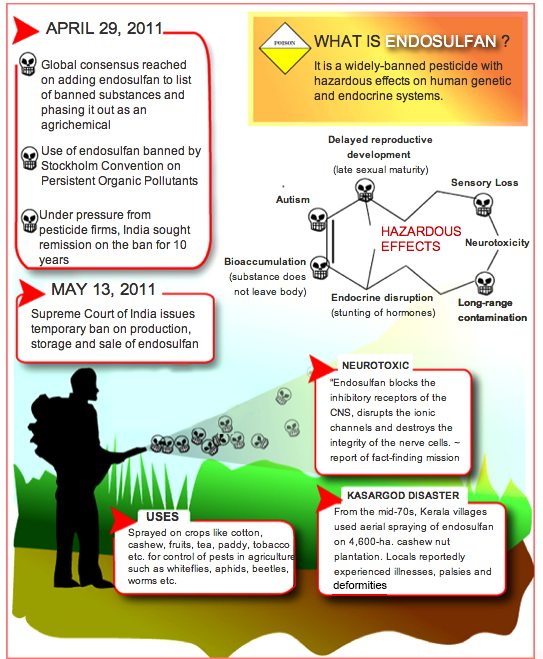Social Justice
Global Hunger Index 2021
Why in News
India has slipped to 101st position in the Global Hunger Index (GHI) 2021 of 116 countries, from its 2020 position of 94th.
Key Points
- About the Global Hunger Index:
- Annual Report: Jointly published by Concern Worldwide and Welthungerhilfe.
- It was first produced in 2006. It is published every October. The 2021 edition marks the 16th edition of the GHI.
- Aim: To comprehensively measure and track hunger at the global, regional, and country levels.
- Calculation: It is calculated on the basis of four indicators:
- Undernourishment: Share of the population with insufficient caloric intake.
- Child Wasting: Share of children under age five who have low weight for their height, reflecting acute undernutrition.
- Child Stunting: Share of children under age five who have low height for their age, reflecting chronic undernutrition.
- Child Mortality: The mortality rate of children under the age of five.
- Scoring:
- Based on the values of the four indicators, the GHI determines hunger on a 100-point scale where 0 is the best possible score (no hunger) and 100 is the worst.
- Each country’s GHI score is classified by severity, from low to extremely alarming.
- Data Collection:
- Undernourishment data are provided by the Food and Agriculture Organisation and child mortality data are sourced from the UN Inter-agency Group for Child Mortality Estimation (UN IGME).
- Child wasting and stunting data are drawn from the joint database of UNICEF, the World Health Organization (WHO) and the World Bank, among others.
- Annual Report: Jointly published by Concern Worldwide and Welthungerhilfe.
- Global Scenario:
- The fight against hunger is dangerously off track.
- Based on current GHI projections, the world as a whole - and 47 countries in particular - will fail to achieve a low level of hunger by 2030.
- Food security is under assault on multiple fronts.
- Worsening conflict, weather extremes associated with global climate change, and the economic and health challenges associated with the Covid-19 pandemic are all driving hunger.
- After decades of decline, the global prevalence of undernourishment - a component of the Global Hunger Index - is increasing.
- This shift may be a leading indicator of reversals in other measures of hunger.
- Inequality - between regions, countries, districts, and communities - is pervasive and, left unchecked, will keep the world from achieving the Sustainable Development Goal (SDG) mandate to “leave no one behind”.
- Africa, South of the Sahara and South Asia are the world regions where hunger levels are highest. Hunger in both regions is considered serious.
- The fight against hunger is dangerously off track.
- Indian Scenario
- Since 2000, India has made substantial progress, but there are still areas of concern, particularly regarding child nutrition.
- India’s GHI score has decreased from a 2000 GHI score of 38.8 points - considered alarming - to a 2021 GHI score of 27.5 - considered serious.
- The proportion of undernourished in the population and the under-five child mortality rate are now at relatively low levels.
- While child stunting has seen a significant decrease - from 54.2% in 1998-1999 to 34.7% in 2016-2018 - it is still considered very high.
- At 17.3%, India has the highest child wasting rate of all countries covered in the GHI. This rate is slightly higher than it was in 1998-1999, when it was 17.1%.
- According to the Index, only 15 countries fare worse than India.
- India was also behind most of the neighbouring countries. Pakistan was placed at 92, Nepal and Bangladesh at 76 and Sri Lanka at 65.
- Government of India Stand:
- The Ministry of Women and Child Development has criticised the report claiming that the methodology used by FAO is unscientific.
- According to the Government, the Global Hunger Index Report 2021 and FAO report on ‘The State of Food Security and Nutrition in the World 2021’ have completely ignored the following facts:
- They have based their assessment on the results of a ‘four question’ opinion poll, which was conducted telephonically by Gallup.
- The scientific measurement of undernourishment would require measurement of weight and Height, whereas the methodology involved here is based on a Gallup poll, based on a pure telephonic estimate of the population.
- The report completely disregards Government’s massive effort to ensure food security of the entire population during the Covid period such as Pradhan Mantri Garib Kalyan Anna Yojna (PMGKAY) and Atmanirbhar Bharat Scheme (ANBS).
- They have based their assessment on the results of a ‘four question’ opinion poll, which was conducted telephonically by Gallup.
Some Related Initiatives by India
- Eat Right India Movement: An outreach activity organised by the Food Safety and Standards Authority of India (FSSAI) for citizens to nudge them towards eating right.
- POSHAN Abhiyan: Launched by the Ministry of Women and Child Development in 2018, it targets to reduce stunting, undernutrition, anemia (among young children, women and adolescent girls).
- Pradhan Mantri Matru Vandana Yojana: A centrally sponsored scheme executed by the Ministry of Women and Child Development, is a maternity benefit programme being implemented in all districts of the country with effect from 1st January, 2017.
- Food Fortification: Food Fortification or Food Enrichment is the addition of key vitamins and minerals such as iron, iodine, zinc, Vitamin A & D to staple foods such as rice, milk and salt to improve their nutritional content.
- National Food Security Act, 2013: It legally entitled up to 75% of the rural population and 50% of the urban population to receive subsidized food grains under the Targeted Public Distribution System.
- Mission Indradhanush: It targets children under 2 years of age and pregnant women for immunization against 12 Vaccine-Preventable Diseases (VPD).
- Integrated Child Development Services (ICDS) Scheme: Launched on 2nd October, 1975, the ICDS Scheme offers a package of six services (Supplementary Nutrition, Pre-school non-formal education, Nutrition & health education, Immunization, Health check-up and Referral services) to children in the age group of 0-6 years, pregnant women and lactating mothers.
Social Justice
Adolescents’ Sexual and Reproductive Health: Rajasthan
Why in News
Recently, findings of a study titled “Returns on Investment in Adolescents’ Sexual and Reproductive Health in Rajasthan” were released.
- Adolescents are a heterogeneous group aged between 10 and 19 years, who are in different stages of development, live in varying circumstances and have distinct needs.
Key Points
- About Study
- It examines the economic and health benefits that could accrue from increased investment in adolescents’ sexual and reproductive health-specific interventions in Rajasthan.
- The study has calculated the benefit-cost ratio to conclude that for every Rs. 100 spent on meeting the unmet needs of adolescents, there will be a return of approximately Rs. 300 in terms of healthcare costs saved.
- It also explores the potential for scaling up the services such as Access to contraceptives; Comprehensive Abortion Care (CAC); Weekly Iron and Folic acid Supplementation (WIFS); and, Menstrual Hygiene Schemes (MHS) across the state.
- It examines the economic and health benefits that could accrue from increased investment in adolescents’ sexual and reproductive health-specific interventions in Rajasthan.
- Adolescents in India
- Population: With 253 million adolescents (which implies that every fifth person in India is an adolescent), India has an unprecedented opportunity to accelerate economic development and reduce poverty.
- Challenges to Healthy Development: A variety of factors that include structural poverty, social discrimination, regressive social norms, inadequate education, and early marriage and childbearing, especially in the marginalized and under-served sections of the population .
- The Case of Rajasthan
- Adolescent Population: The total adolescent population of Rajasthan is 15 million or 23% of the total population in the state. Of these, 53% are males and 47% are females.
- Child Marriage and Adolescent Pregnancy: It continues to be of concern in Rajasthan as more than one-third of the girls (35.4%) get married before 18 years of age and 6.3% in the age group of 15-19 years are already mothers.
- This is significantly higher than the national average of 27%.
- Impact on Mother and Infant
- Birth-related Complications: Adolescent mothers aged 10-19 years face higher risks of birth-related complications like eclampsia, puerperal endometritis (uterine infection) and other systemic infections than women of higher age groups.
- Risk to Newborn: Babies born to adolescent mothers also face a higher risk of low birth weight, prematurity, birth injuries, stillbirth and infant mortality.
- Restrict Career Choices: Health problems, lack of education and the responsibilities of parenthood combine to further restrict the adolescent’s future economic opportunities and career choices.
- Suggestions
- Development of new standards and guidelines to improve the quality of reproductive health services.
- The State government should prudently invest in ensuring that the working age population is healthy and literate, and has access to resources.
- While the adolescent-specific health interventions needed to be sensitive to their requirements, nutrition supplementation programmes should also be strengthened and scaled up.
- Increase in the modern contraceptive prevalence rate for spacing methods from the existing 10.1% to 32% in the 2021-25 period.
- Adoption of a multi-faceted and innovative approach to reach out to adolescents.
Initiatives Taken
- Rajasthan
- Zero Teenage Pregnancy Campaign: The aim of the campaign is to create greater awareness around teenage pregnancy in Rajasthan and encourage stakeholders to make a strong commitment towards ending teenage pregnancy.
- National Initiatives
- Adolescent Friendly Health Services Program: Rashtriya Kishor Swasthya Karyakram is there, where female adolescents are sensitised about their health.
- Scheme for Adolescent Girls: To facilitate, educate and empower Adolescent Girls (AGs) so as to enable them to become self-reliant and aware citizens.
- Poshan Abhiyan and PM-Poshan Scheme to address the issue of malnutrition.
Governance
Medical Termination of Pregnancy Rules
Why in News
Recently, the Government has notified new rules under the Medical Termination of Pregnancy (Amendment) Act, 2021.
- The 2021 Act was passed to amend the Medical Termination of Pregnancy (MTP) Act, 1971.
Key Points
- About the Rules
- Increased Gestational Limit: The gestational limit for termination of a pregnancy has been increased from 20 to 24 weeks for certain categories of women. The seven specific categories are:
- Survivors of sexual assault or rape or incest.
- Minors.
- Change of marital status during the ongoing pregnancy (widowhood and divorce).
- Women with physical disabilities.
- Mentally ill women.
- Foetal malformation that has a substantial risk of being incompatible with life or if the child is born, he/ she may suffer from serious physical or mental abnormalities.
- Women with pregnancy in humanitarian settings or disaster or emergency situations.
- State-level Medical Board: A state-level medical board will be set up to decide if a pregnancy may be terminated after 24 weeks in cases of foetal malformation.
- The medical boards are to either accept or reject the proposal for medical termination of pregnancy within three days of receiving the request.
- The abortion procedure has to be done with five days of the board receiving the request for the same.
- Increased Gestational Limit: The gestational limit for termination of a pregnancy has been increased from 20 to 24 weeks for certain categories of women. The seven specific categories are:
- Significance
- The new rules will contribute towards ending preventable maternal mortality to help meet the Sustainable Development Goals (SDGs) 3.1, 3.7 and 5.6.
- SDG 3.1 pertains to reducing maternal mortality ratio whereas SDGs 3.7 and 5.6 pertain to universal access to sexual and reproductive health and rights.
- The new rules will increase the ambit and access of women to safe abortion services and will ensure dignity, autonomy, confidentiality and justice for women who need to terminate pregnancy.
- The new rules will contribute towards ending preventable maternal mortality to help meet the Sustainable Development Goals (SDGs) 3.1, 3.7 and 5.6.
- Related Issues
- Although the new rules have increased access to abortions to some extent, they fail to correct a fundamental flaw in the MTP Act that a woman does not have the basic right to terminate a pregnancy if and when she decides.
- The formation of a state medical board raises additional concerns around their access, particularly to women from rural areas.
- The Act requires abortion to be performed only by doctors with specialisation in gynaecology or obstetrics.
- As there is a 75% shortage of such doctors in community health centres in rural areas, pregnant women may continue to find it difficult to access facilities for safe abortions.
- The society is still unable to ensure reproductive autonomy to the women, many of whom not only lack the freedom to plan pregnancies but also face multiple barriers when they seek abortions.
Internal Security
Jurisdiction Enhancement of BSF
Why in News
Recently, the Ministry of Home Affairs has issued a notification to widen the jurisdiction of Border Security Force (BSF) for seizure, search and arrest up to 50km from the international border in Assam, West Bengal and Punjab.
Key Points
- About the Order
- This notification replaces a 2014 order under the BSF Act, 1968, which also covered the States of Manipur, Mizoram, Tripura, Nagaland and Meghalaya.
- It also specifically mentions the two newly created Union Territories- J&K and Ladakh.
- The violations for which the BSF carries out search and seizure include smuggling of narcotics, other prohibited items, illegal entry of foreigners and offences punishable under any other Central Act among others.
- After a suspect has been detained or a consignment seized within the specified area, the BSF can only conduct “preliminary questioning” and has to hand over the suspect to the local police within 24 hours.
- The BSF does not have the powers to prosecute crime suspects.
- This notification replaces a 2014 order under the BSF Act, 1968, which also covered the States of Manipur, Mizoram, Tripura, Nagaland and Meghalaya.
- Issues Involved
- Public Order vs Security of State: Public order, which connotes public peace, safety and tranquility, is primarily the responsibility of a State Government (Entry 1, State list).
- However, when there is a serious public disorder which threatens the security or defence of the State or of the country itself (entry 1 of Union list), the situation becomes a matter of concern for the Union Government also.
- Weakening Spirit of Federalism: Without obtaining the concurrence of the state government, the notification amounts to encroachment on the powers of the states.
- The Punjab Government has asserted that this notification is Centre’s encroachment under the guise of security or development.
- Affecting Functioning of BSF: Policing in the hinterland is not the role of a border guarding force, rather it would weaken the capacity of the Border Security Force in discharging its primary duty of guarding the international border.
- Public Order vs Security of State: Public order, which connotes public peace, safety and tranquility, is primarily the responsibility of a State Government (Entry 1, State list).
Constitutional Viewpoint on Deployment of Armed forces in States
- Under Article 355, the Centre can deploy its forces to protect a state against “external aggression and internal disturbance,” even when the state concerned does not requisition the Centre’s assistance and is reluctant to receive central forces.
- In the case of a state’s opposition to the deployment of armed forces of the Union, the right course for the Centre is to first issue directives under Article 355 to the state concerned.
- In the event of the state not complying with the directive of the Central government, the Centre can take further action under Article 356 (President’s Rule).
BSF
- The BSF was raised in 1965, after the India-Pakistan war.
- It is one of the seven Central Armed Police Forces of the Union of India under the administrative control of the Ministry of Home Affairs (MHA).
- Other Central Armed Police Forces are: Assam Rifles (AR), Indo-Tibetan Border Police (ITBP), Central Industrial Security Force (CISF), Central Reserve Police Force (CRPF), National Security Guards (NSG) and Sashastra Seema Bal (SSB).
- The 2.65-lakh force is deployed along the Pakistan and Bangladesh borders.
- It is deployed on Indo-Pakistan International Border, Indo-Bangladesh International Border, Line of Control (LoC) along with Indian Army and in Anti-Naxal Operations.
- It has an air wing, marine wing, an artillery regiment, and commando units.
- BSF has been defending Sir Creek in Arabian Sea and Sundarban delta in the Bay of Bengal with its state of art fleet of Water Crafts.
- BSF has an instrumental role in helping state administration in maintaining Law and Order and conducting peaceful elections.
- BSF has been crusading against natural calamity to save precious human lives as and when warranted.
- It contributes dedicated services to the UN peacekeeping Mission by sending a large contingent of its trained manpower every year.
- It has been termed as the First Line of Defence of Indian Territories.
Way Forward
- Consent of State is Desirable: Given the security condition in India's neighbourhood, the existing relationship between the Union armed forces and the State civil authorities do not require any change.
- However, before the Union Government deploys its armed forces, it is desirable that the State Government should be consulted, wherever feasible.
- State Becoming Self-Reliant: Each State Government may work out, in consultation with the Union Government, short term and long-term arrangements for strengthening its Armed Police.
- The objective will be to become largely self-reliant in the matter of Armed Police so that the assistance of the Union armed forces will be necessary only in cases of very severe disturbances.
- Regional Arrangement: A group of neighbouring States may, by consensus, have a standing arrangement for the use of the Armed Police of one another in case of need.
- The Zonal Council would be the best forum for achieving consensus of the States within a zone for devising such an arrangement.
- Police Reforms: It is high time for carrying out much needed Police reforms as highlighted by various committees and judgment.
Important Facts For Prelims
APJ Abdul Kalam
Why in News
Recently, the Prime Minister paid tribute to the former President APJ Abdul Kalam on his 90th birth anniversary.
- Kalam Program for Intellectual Property Literacy and Awareness Campaign (KAPILA) was launched in 2020 on the occasion of his birth anniversary.
Key Points
- About
- Born on 15th October 1931 at Rameswaram in Tamil Nadu.
- His birth anniversary is celebrated as the National Innovation Day.
- He graduated in Science from St Joseph's College, Trichy in 1954 and specialized in Aeronautical Engineering from Madras Institute of Technology (MIT) in 1957.
- He is one of the most distinguished scientists of India with the unique honour of receiving honorary doctorates from 48 Universities and institutions from India and abroad.
- He was sworn in as India’s 11th President in 2002 and completed the full term in 2007.
- He planned programmes to produce a number of successful missiles, which helped earn him the nickname “Missile Man”.
- Born on 15th October 1931 at Rameswaram in Tamil Nadu.
- His Contribution
- Pioneer in Fiberglass Technology
- He was a pioneer in fiberglass technology and led a young team to initiate this effort in ISRO from design, development leading to the production of composites rocket motor cases.
- Satellite Launch Vehicle (SLV-3)
- He made a significant contribution as Project Director to develop India's first indigenous Satellite Launch Vehicle (SLV-3) which successfully injected the Rohini satellite into Near-Earth Orbit in July 1980 and made India an exclusive member of Space Club.
- He was responsible for the evolution of ISRO's launch vehicle programme, particularly the PSLV configuration.
- Indigenous Guided Missiles
- After working for two decades in ISRO and mastering launch vehicle technologies, he took up the responsibility of developing Indigenous Guided Missiles at the DRDO.
- He was the Chief Executive of Integrated Guided Missile Development Programme (IGMDP).
- He led to the weaponization of strategic missile systems and the Pokhran-II nuclear tests in collaboration with the Department of Atomic Energy, which made India a nuclear weapon State.
- After working for two decades in ISRO and mastering launch vehicle technologies, he took up the responsibility of developing Indigenous Guided Missiles at the DRDO.
- Technology Vision 2020
- In 1998, he put forward a countrywide plan called Technology Vision 2020, which he described as a road map for transforming India from a less-developed to a developed society in 20 years.
- The plan called for, among other measures, increasing agricultural productivity, emphasising technology as a vehicle for economic growth, and widening access to health care and education.
- In 1998, he put forward a countrywide plan called Technology Vision 2020, which he described as a road map for transforming India from a less-developed to a developed society in 20 years.
- Others
- He was passionate about bringing rural prosperity through PURA (Providing Urban Amenities to Rural Areas), in which science and technology has to play a key role.
- Based on his diverse experience he propagated the concept of World Knowledge Platform through which the core competencies of organizations and nations can be synergized to innovate and create solutions and products for the challenges of the 21st century.
- Pioneer in Fiberglass Technology
- Awards Received
- He was awarded the coveted civilian awards - Padma Bhushan (1981) and Padma Vibhushan (1990) and the highest civilian award Bharat Ratna (1997).
- Literary Works
- "Wings of Fire", "India 2020 - A Vision for the New Millennium", "My journey" and "Ignited Minds - Unleashing the power within India", "Indomitable Spirit", "Guiding Souls", "Envisioning an Empowered Nation", "Inspiring Thoughts" etc.
- Death
- 27th July 2015 at Shillong, Meghalaya.
Important Facts For Prelims
CRISP-M Tool for MGNREG Scheme
Why in News
Recently, the Climate Resilience Information System and Planning (CRISP-M) tool for Mahatma Gandhi National Rural Employment Guarantee Scheme (MGNREGS) was launched.
Key Points
- CRISP-M Tool:
- It will help embed climate information in the Geographic Information System (GIS) based planning and implementation of MGNREGS.
- GIS is a computer system that analyzes and displays geographically referenced information.
- The implementation of CRISP-M will open up new possibilities for rural communities to deal with the issues of climate change.
- This tool will be used in seven states: Bihar, Jharkhand, Uttar Pradesh, Madhya Pradesh, Chhattisgarh, Odisha and Rajasthan.
- It will help embed climate information in the Geographic Information System (GIS) based planning and implementation of MGNREGS.
- MGNREGScheme:
- About: It is one of the largest work guarantee programmes in the world.
- Launch:
- It was launched on 2nd February 2006.
- The Mahatma Gandhi National Rural Employment Guarantee Act was passed on 23rd August 2005.
- Objective:
- To guarantee 100 days of employment in every financial year to adult members of any rural household willing to do public work-related unskilled manual work.
- Legal Right to Work:
- Unlike earlier employment guarantee schemes, the act aims at addressing the causes of chronic poverty through a rights-based framework.
- At least one-third of beneficiaries have to be women.
- Wages must be paid according to the statutory minimum wages specified for agricultural labourers in the state under the Minimum Wages Act, 1948 (now subsumed under Code on Wages, 2019).
- Demand-Driven Scheme:
- The most important part of MGNREGA’s design is its legally-backed guarantee for any rural adult to get work within 15 days of demanding it, failing which an ‘unemployment allowance’ must be given.
- This demand-driven scheme enables the self-selection of workers.
- Decentralised Planning:
- There is an emphasis on strengthening the process of decentralisation by giving a significant role to the Panchayati Raj Institutions (PRIs) in planning and implementing these works.
- The act mandates Gram sabhas to recommend the works that are to be undertaken and at least 50% of the works must be executed by them.
Important Facts For Prelims
Endosulfan
Why in News
Protestors at Periya Plantation Corporation godown in Kasaragod, Kerala have called for returning endosulfan (an organochlorine pesticide) to the manufacturing firm for safe disposal.
- In 2011, the supreme court banned endosulfan throughout India. Use of endosulfan causes a great threat to the balance of the environment.

